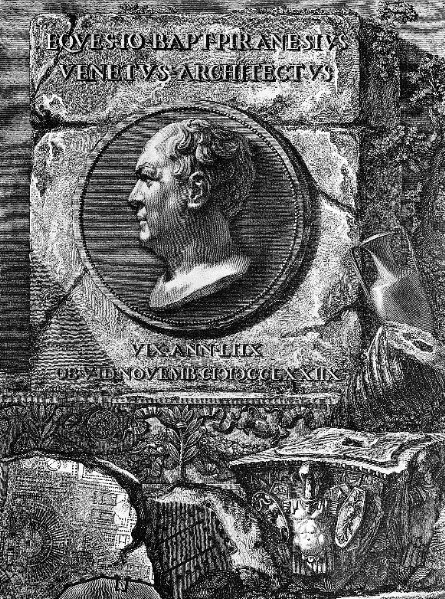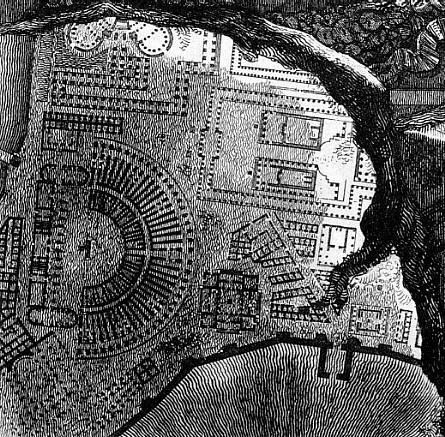Catalogo:
Portico Minucio vecchio.: «
Paterc. nel lib. 2, al cap. 8, Lampridio. in Commodo, Sesto Rufo, e P. Vittore nella Reg. IX.
» Si riferiscono nel cap. 4, art. 8.
The porticus Minucia, built in 109 B.C. by Minucius Rufus. This porticus was double, and seems to have consisted of two parts; for, at a later period, we are told that there were two buildings, the porticus Minucia vetus and the porticus Minucia frumentaria. In the latter, under the empire, the distribution of grain tickets to the proletariat took place; while the former was a place for lounging and for political assemblies. The relation between the porticus vetus and the porticus frumentaria has never been satisfactorily explained, as it is expressly stated that they were both built by the same man at the same time.
The porticus Minucia was directly at the base of the Capitoline hill, between it and the theater of Marcellus. In the second century it seems to have served as one of the offices of the water works of the city, as we read of curatores aquarum et Miniciae. Both parts of the porticus existed in the fourth century, and some remains now visible, e.g. two pilasters built into the walls of houses in the piazza Montanara are thought to belong to them.
(Platner)
Vincenzo Fasolo, "The Campo Marzio of G. B. Piranesi".
2691f
1956
Tafuri text
1996.09.02
Pagan - Christian - Triumphal Way
3123h
3123i
3123j
3123k
1999.11.21
| |
the portrait of Piranesi
1998.06.28
There is a portrait of Piranesi engraved by his son Francesco. The portrait is a profile set in a medalion, and the overall composition of the plate is in the Piranesi style. In the lower left corner, there is a stone fragment carved with plans, and it is indeed a fragment of the Ichnographia, specifically the Theater of Marcellus, the Minutia Vetus, and the Porticus Octavae. ...wonder if Francesco, or even Piranesi himself, saw the Ichnographia as Piranesi's greatest achievement. The four-sided Temple of Janus is also clearly delineated on the fragment.
...a case for the father-son theme that begins with Mars and Romulus (inversely God, the Father and His Son Jesus), and could include Augustus and Agrippa, and Trajan and Hadrian, and even Theodosius and Honorius.


|